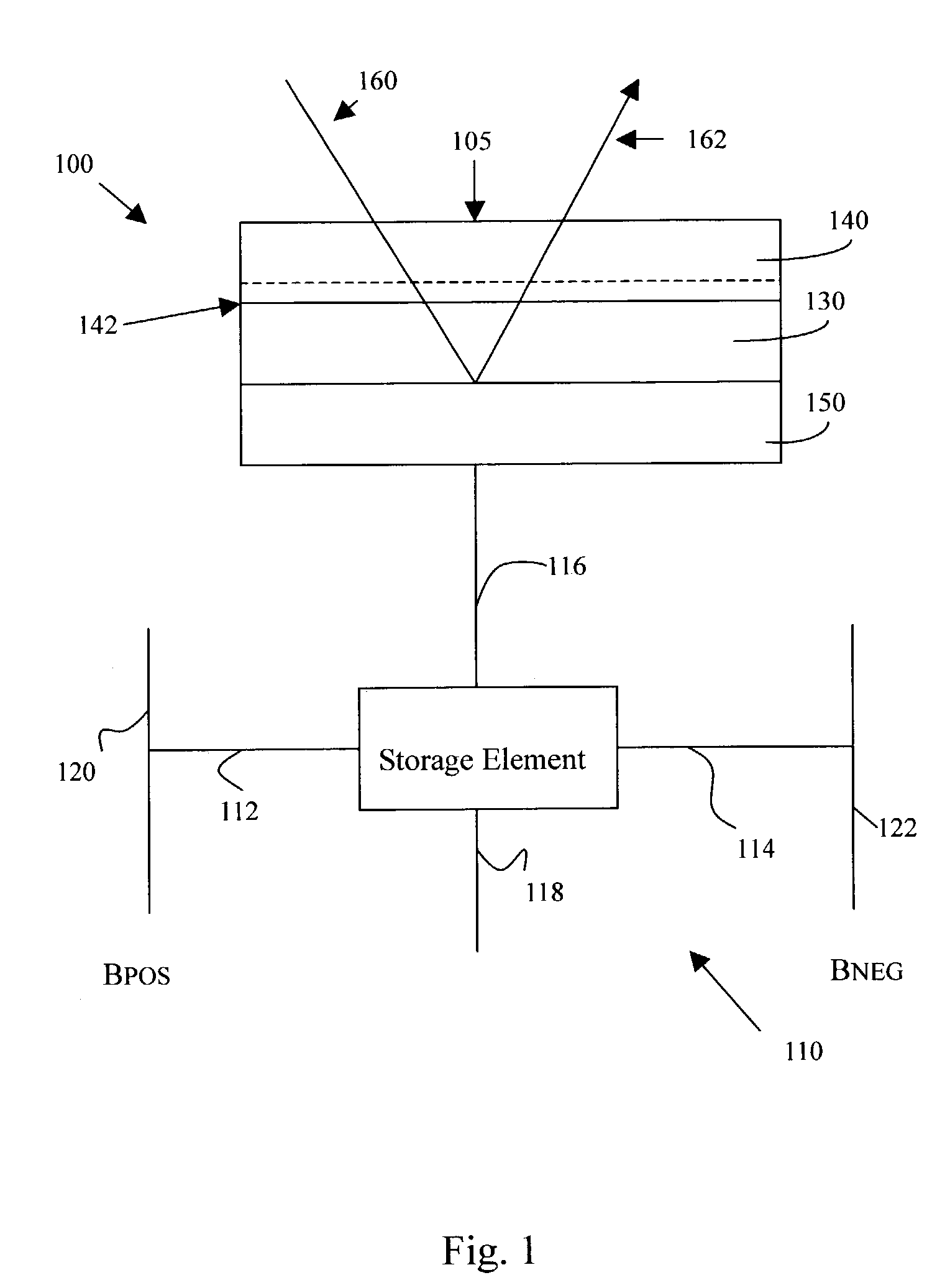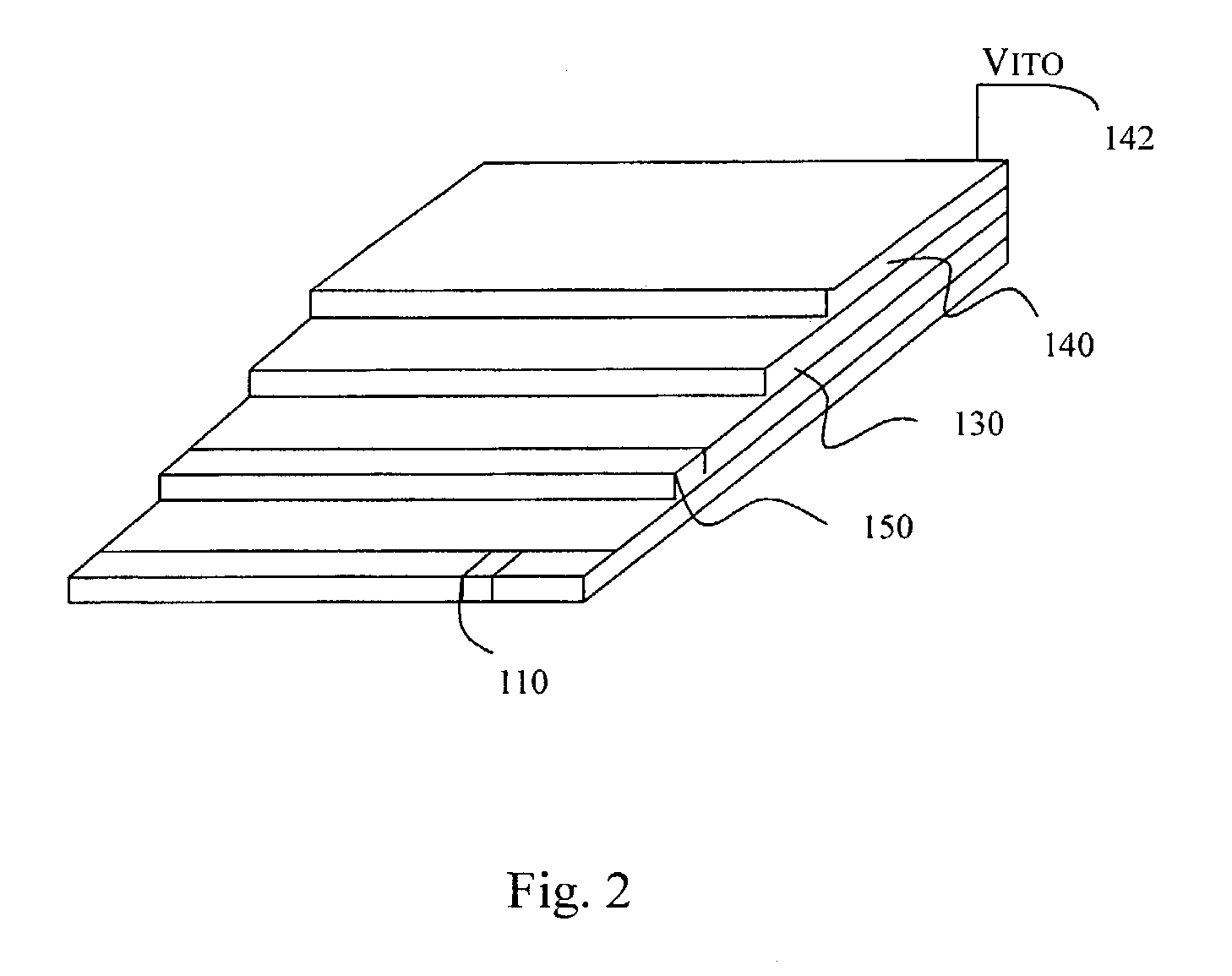Liquid crystal on silicon (LCOS) microdisplay technology is still challenged by the need to DC balance the liquid
crystal material accurately while generating images that are free of
flicker and while limiting the RMS voltages to the useful range of the electro-optic efficiency curve of the liquid
crystal device.
Each is prone to a particular class of problems.
All are prone to some degree to the related problems of DC offset and image
flicker.
However, the conventional
multiplexing devices that attempt to narrow the range of voltages that are applied to the pixel
electrode on an instantaneous basis and that receive input signals directly from a
memory cell fail to provide the needed flexibility because they are not capable of independently controlling the memory state that gets driven through the
multiplexer to the pixel mirror.
Limited by these technical difficulties, the conventional technologies of LCOS display are provide displays of higher quality only with difficulty.
Specifically, the displays are often hindered by problems of image sticking and flicker due to the low DC balancing rates as will be further explained below.
As the cost of LCD systems continues to fall, i.e., is predicted that they will eventually take over the market for traditional CRT applications.
The biggest disadvantages of current CRT systems are their bulky size, geometry, and weight, as well as their high
power consumption.
These disadvantages are clearly evident when comparing the features of CRT and LCD projection displays with similar characteristics.
However, the inherent physical characteristics of liquid crystal materials cause deterioration in the performance of the liquid crystal material due to an ionic migration or “drift” when a
DC voltage is applied to them.
This will result in the contaminants plating out onto the alignment layer with the result in that the liquid crystal material will begin to “stick” at an orientation and not respond fully to the drive voltages.
This effect is manifested by the appearance of a ghost image of the previous image that is objectionable to viewers.
Known modulation schemes are not able to prevent liquid crystal deterioration while still being able to accurately control the RMS voltage as that applied to the liquid crystal in many projection applications where the
display device is subjected to
high heat loading and high
light intensity.
It follows that RMS voltages outside of this range are not useful and will cause gray scale distortions if applied to the crystal pixels.
Many known display systems drive the
logic circuitry with voltages that are outside of the useful range of the liquid crystal, and applying these voltages directly onto the pixel
electrode results in. wasted power.
But since the entire panel is written with voltage scales that alternate between a higher
voltage range and a lower
voltage range, conventional
multiplexing devices fail to provide the needed flexibility because they are not capable of independently controlling the memory state that gets driven through the
multiplexer to the pixel mirror.
This adds substantially to the complexity of the device because the modulated voltage must be correct in all respects as these same voltages are used to drive the pixel mirrors and thus achieve DC balance.
Design of a line that
cam propagate a number of different voltages across long lines that must accurate in all cases is a significant design constraint.
All these technical difficulties limit the effectiveness of the above inventions in providing practical solutions to the above-mentioned limitations.
Furthermore, since the conventional systems utilize the state of the
memory cell as a
control signal to direct a voltage onto the pixel mirror, there is no independent means for selecting and directing a narrower range of voltages to be consistent with the electro-optical response curve, onto the pixel electrode.
It often leads to further difficulties and limitations.
Such approach places several limitations on the device: First, the common plane (VCOM) must be a fixed value because during the
transition time data is present on the display in both upper and lower voltage ranges.
However, with this
voltage range, there are very few liquid crystal materials available to satisfy the requirement of the panel.
For these reasons, manufacturing LCOS display panels and other LCD devices often results in a lower yields than average
yield rate.
Thus, the production costs are increased when non-standard
CMOS processes have to be carried out for manufacturing the LCOS device in order to satisfy these operational conditions when suitable liquid crystal materials are used.
Furthermore the technique of applying a DC balance switching rate of once per data load in the conventional micro-displays further creates a situation where the
ion migrating within the liquid crystal material begin to plate out toward the end of the data frame at a lower DC balancing rate.
It is objectionable and in fact is a specification item for TFT displays that the old data must dissipate within a specified short period.
With a low DC balancing rate, a LCOS display often generates a second objectionable flicker artifact due to slow data rates caused by the existence of DC offset mechanisms.
This second problem creates a dilemma between solving flicker and eliminating image sticking.
While the controller can be more conveniently implemented, it does have a technical limitation due to a constraint that the P-MOS transistors are not effective in pulling down the voltage of the pixel mirror.
The limitation occurs due to the fact that a P-MOS
transistor is strong in pulling the voltage up to Vdd while weak in pulling down the voltage to Vss.
 Login to View More
Login to View More  Login to View More
Login to View More 


